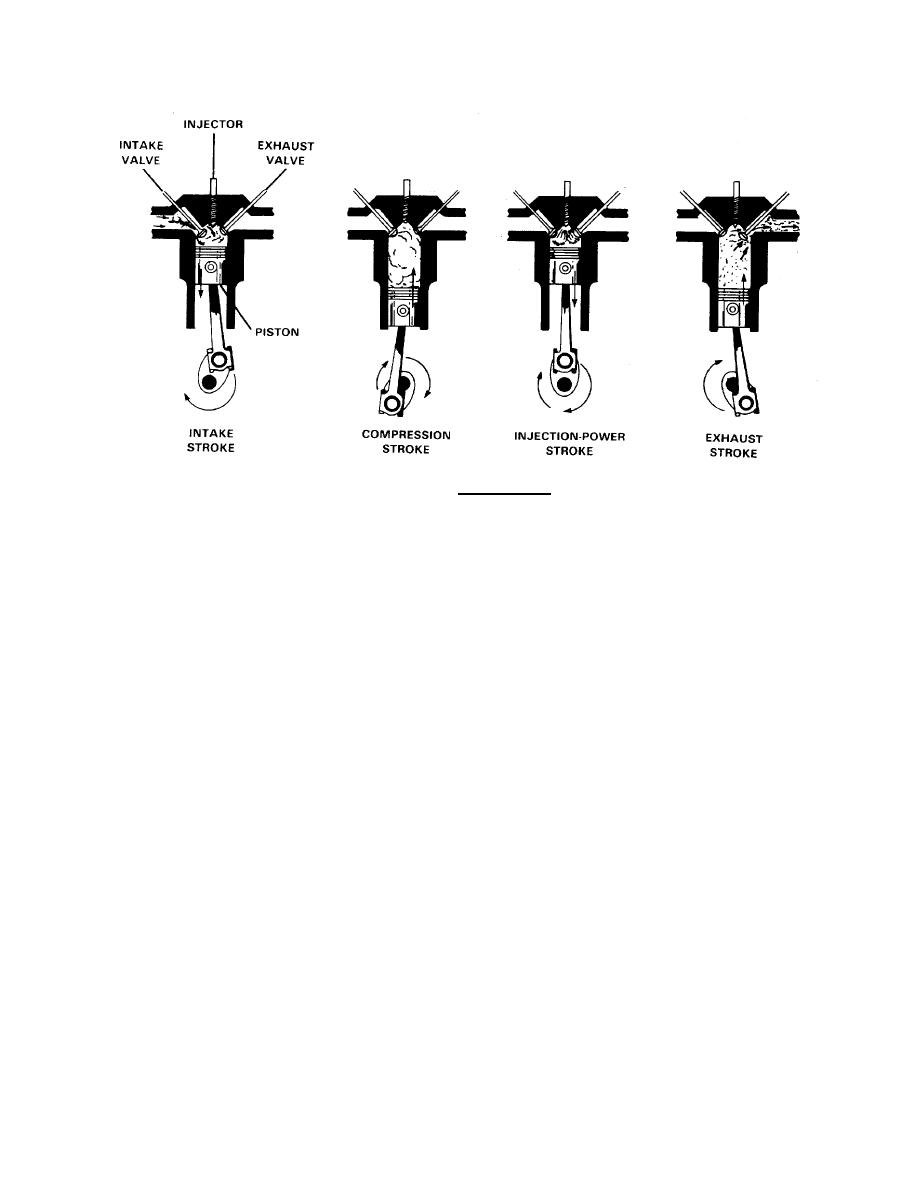
| Tweet |

Custom Search
|
|

|
||
 TM 55-1905-223-24-1
FIGURE 1-2. Diesel Engine.
(1)
Intake Stroke. During the intake stroke, the piston travels downward, the intake valve is open, and
the exhaust valve is closed. The downward travel of the piston allows air from the intake manifold to enter the
cylinder. The intake manifold is pressurized with air from the turbocharger.
(2)
Compression Stroke. At the end of the intake stroke, the intake valve closes and the pistonstarts
upward on compression stroke (exhaust valve remains closed). At end of compression stroke, air in
combustion chamber is compressed into a small space, causing the air temperature to rise to a point high
enough for ignition of fuel. During the last part of compression stroke and early part of power stroke, a small
metered charge of fuel is injected into combustion chamber. The fuel is then ignited by the hot compressed air.
(3)
Power Stroke. During the beginning of the power stroke, the pistonis pushed downward by the
burning and expanding gases (intake and exhaust valves are still closed). As more fuel is added and burns,
gases get hotter and expand to further force the piston downward to deliver driving force to crankshaft rotation.
(4)
Exhaust Stroke. During the exhaust stroke, the intake valve is closed, exhaust valve is open, and
the piston is on the upstroke. Upward travel of the piston forces burned gases out of combustion chamber
through the open exhaust valve port and into the exhaust manifold.
1-8
|
||
 |
||